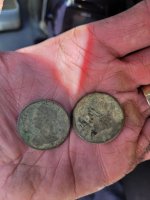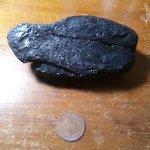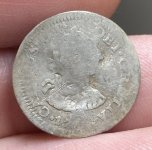Gypsy Heart
Gold Member
In 1811, Sans Orielle, an Osage Indian, with others of his tribe, guided Major George C. Sibley, Indian Agent from Fort Osage, Missouri, and his party to Salt Plains. They are thought to have been the first white men to see the Plains, which Major Sibley called the Grand Saline. The Salt Fork of the Arkansas River, flowing around the plain, was known to the Osages as Nescatunga (big salt water). Another early day explorer to see the Plains was Capt. Nathan Boone, who headed a Government expedition from Fort Gibson into what is now central Kansas in 1843.
The Great Salt Plains have been the scene of many Indian Councils, both of war and peace. In drafting the treaty which defined the territory to become the so called permanent home of the Cherokees in 1828, the United States Government withheld the Salt Plains area with the provision that, "The right is reserved to the United States to allow other tribes of red men to get salt on the Great Salt Plains in common with the Cherokee Tribe." The value of the Plains lay not in its salt alone, but in the rich hunting afforded by the animals migrating there for the salt supply, and possession of this area is said to have been the muse of many Indian battles.
In the earliest of the settlement of the Indian Territory, Western Kansas and Texas cattlemen sent wagons to the Plains to haul away great loads of salt. A local legend of interest concerns a cache of gold that was reportedly buried in the vicinity of the dam. In 1850, five men were returning to Missouri from California with fourteen bars of gold. In the vicinity of the present dam, they were attacked by Cheyenne-Arapaho Indians, three of the men being killed. The two remaining men wrapped the gold in a buffalo calfskin and buried it, marking the spot with an end-gate rod from their wagon. At least one of the men survived, since in 1901 Carl Sheldon arrived in the area with a map showing the location of the buried gold. Mr. Sheldon continued to search for the gold until 1940 when he was forced to leave because of the dam construction. In 1904, Sheldon had sample of the material from the drill bit assayed and traces of gold and the hide reportedly were found. Due to shaft cave-ins and movement by underlying quicksand, this was the closest Sheldon came to finding the gold.
HISTORY AND DEVELOPMENT
The Great Salt Plains Dam and Lake located on the Salt Fork of the Arkansas River is the oldest Corps of Engineers’ project in the Tulsa District, authorized by Congress in the Flood Control Act of 1936. The Little Rock District started construction in September of 1938. When the Tulsa District was organized in July of 1939, the project was placed under their jurisdiction and was completed in July of 1941 at a cost of some $4.6 million.
http://www.swt.usace.army.mil/recre...?tblMessages__LakeName=Great Salt Plains Lake
The Great Salt Plains have been the scene of many Indian Councils, both of war and peace. In drafting the treaty which defined the territory to become the so called permanent home of the Cherokees in 1828, the United States Government withheld the Salt Plains area with the provision that, "The right is reserved to the United States to allow other tribes of red men to get salt on the Great Salt Plains in common with the Cherokee Tribe." The value of the Plains lay not in its salt alone, but in the rich hunting afforded by the animals migrating there for the salt supply, and possession of this area is said to have been the muse of many Indian battles.
In the earliest of the settlement of the Indian Territory, Western Kansas and Texas cattlemen sent wagons to the Plains to haul away great loads of salt. A local legend of interest concerns a cache of gold that was reportedly buried in the vicinity of the dam. In 1850, five men were returning to Missouri from California with fourteen bars of gold. In the vicinity of the present dam, they were attacked by Cheyenne-Arapaho Indians, three of the men being killed. The two remaining men wrapped the gold in a buffalo calfskin and buried it, marking the spot with an end-gate rod from their wagon. At least one of the men survived, since in 1901 Carl Sheldon arrived in the area with a map showing the location of the buried gold. Mr. Sheldon continued to search for the gold until 1940 when he was forced to leave because of the dam construction. In 1904, Sheldon had sample of the material from the drill bit assayed and traces of gold and the hide reportedly were found. Due to shaft cave-ins and movement by underlying quicksand, this was the closest Sheldon came to finding the gold.
HISTORY AND DEVELOPMENT
The Great Salt Plains Dam and Lake located on the Salt Fork of the Arkansas River is the oldest Corps of Engineers’ project in the Tulsa District, authorized by Congress in the Flood Control Act of 1936. The Little Rock District started construction in September of 1938. When the Tulsa District was organized in July of 1939, the project was placed under their jurisdiction and was completed in July of 1941 at a cost of some $4.6 million.
http://www.swt.usace.army.mil/recre...?tblMessages__LakeName=Great Salt Plains Lake








